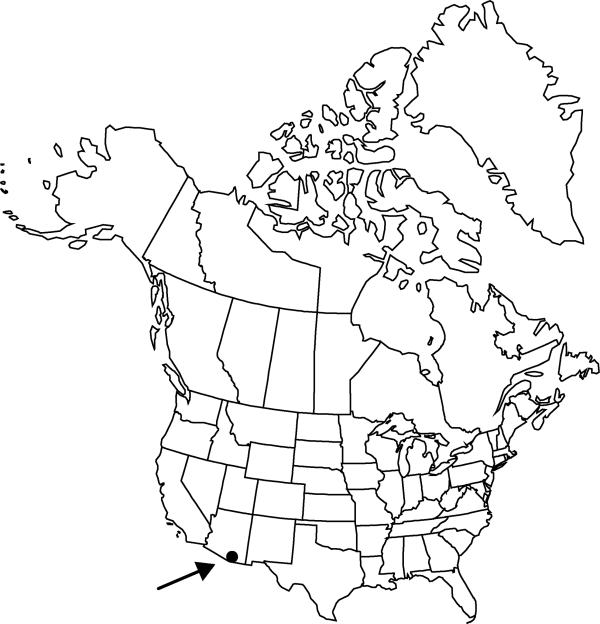Mammillaria macdougalii
in L. H. Bailey, Stand. Cycl. Hort. 4: 1982. 1916.
Plants unbranched, deeply seated in substrate. Roots short, obconic taproots; secondary roots diffuse. Stems usually flat-topped (in old age or under dense brush hemispheric), 4–20 × 9-25(–30) cm, firm; tubercles 10–17 × 6–8.5 mm; axils woolly, wool 5–8 mm, bristles absent; cortex and pith not mucilaginous; latex sticky white, abundant in healthy tissue throughout cortex of stem, tubercles, and sometimes flower receptacles. Spines 11–14(–16) per areole, white to straw yellow, glabrous; radial spines 10–12 per areole, whitish to pale yellowish tan, needlelike, 20 mm, stiff; central spines 1–2(–4) per areole, ± porrect or 1 ascending and 1 descending, straight or slightly curved, 10 mm; subcentral spines 0. Flowers 3–4 × 2.5–3.5 cm; outermost tepal margins densely minutely fimbriate (at 10×); inner tepals greenish white to greenish yellow, 14–17(–25) × 2–3 mm; stigma lobes yellow-green to pale green, 2–3 mm. Fruits whitish green proximally, pale green distally with pale rose-purple on sunlit portions, obovoid to clavate, 15–26 × 7.5–15 mm, juicy only in fruit walls; floral remnant persistent. Seeds reddish brown or orange, 1.1–1.3 × 0.9 × 0.8 mm, pitted; testa intermediate, anticlinal cell walls undulate, interstices much narrower than pit diam., pits deeply concave, elongate. 2n = 22.
Phenology: Flowering Mar–May; fruiting Oct–Mar.
Habitat: Rocky slopes and ridges, ecotone between Sonoran desert scrub and chaparral, oak woodlands, grasslands
Elevation: 1100-1800 m
Distribution

Ariz., Mexico (Sonora).
Discussion
Mammillaria macdougalii is the characteristic flat-topped mammillaria of the mountains near Tucson and Nogales, Arizona. Records from farther east are all (insofar as can be determined) misidentifications of M. heyderi var. bullingtoniana.
Selected References
None.